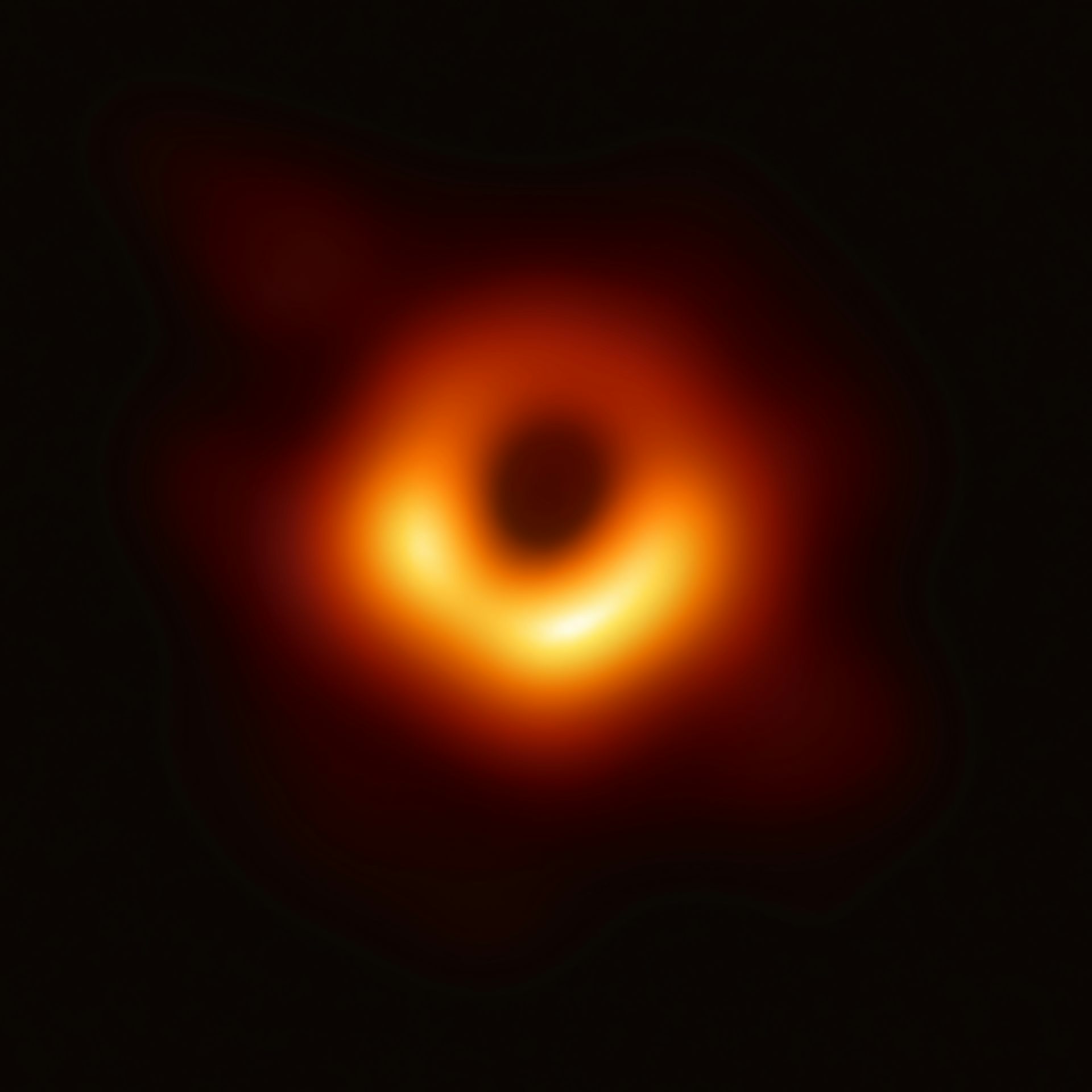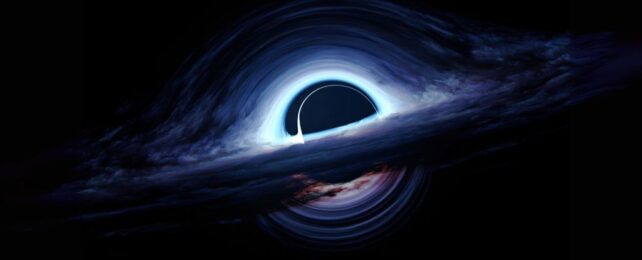Albert Einstein's theory of gravity, general relativity, is famously incomplete. As proven by physics Nobel laureate Roger Penrose, when matter collapses under its own gravitational pull, the result is a "singularity" – a point of infinite density or curvature.
At a singularity, space, time and matter are crushed and stretched into nonexistence. The laws of physics as we know them suffer a complete breakdown.
If we could observe singularities, our physical theories couldn't be used to predict the future from the past. In other words, science would become an impossibility.
Penrose also realized nature may hold a remedy for this fate – black holes.
A defining feature of a black hole is its event horizon, a one-way membrane in space-time. Objects – including light – that cross the event horizon can never leave due to the black hole's incredibly strong gravitational pull.
In all the known mathematical descriptions of black holes, singularities are present in their core.
Penrose postulated that all the singularities of gravitational collapse are "clothed" by the event horizons of black holes – meaning we could never observe one. With the singularity inside the event horizon, physics in the rest of the universe is business as usual.
This conjecture of Penrose, that there are no "naked" singularities, is called cosmic censorship.
After half a century, it remains unproven and one of the most important open problems in mathematical physics. At the same time, finding examples of instances where the conjecture doesn't hold up has proven equally difficult.
In recent work, published in Physical Review Letters, we showed that quantum mechanics, which rules the microcosmos of particles and atoms, supports cosmic censorship.

Black holes
Black holes are influenced by quantum mechanics to some extent, but such influence is normally ignored by physicists. For example, Penrose excluded these effects in his work, as did the theory that enabled scientists to measure ripples in space-time called gravitational waves from black holes.
When they are included, scientists call the black holes "quantum black holes". These have long provided a further mystery, as we don't know how Penrose's conjecture works in the quantum realm.
A model where both matter and space-time obey quantum mechanics is often considered the fundamental description of nature. This could be a "theory of everything" or a theory of "quantum gravity".
Despite tremendous effort, an experimentally verified theory of quantum gravity remains elusive.
It is widely expected that any viable theory of quantum gravity should resolve the singularities present in the classical theory – potentially showing they are simply an artefact of an incomplete description. So it's reasonable to expect quantum effects should not make the problem of whether we could ever observe a singularity worse.
That's because Penrose's singularity theorem makes certain assumptions about the nature of matter, namely that the matter in the universe always has positive energy.
However, such assumptions can be violated quantum mechanically – we know that negative energy can exist in the quantum realm in small amounts (called the Casimir effect).
Without a fully fledged theory of quantum gravity, it is difficult to address these questions. But progress can be made by considering "semi-classical" or "partially-quantum" gravity, where space-time obeys general relativity but matter is described with quantum mechanics.
Though the defining equations of semi-classical gravity are known, solving them is another story entirely. Compared to the classical case, our understanding of quantum black holes is much less complete.
From what we do know of quantum black holes, they also develop singularities. But we expect a suitable generalisation of classical cosmic censorship, namely, quantum cosmic censorship, should exist in semi-classical gravity.
Developing quantum cosmic censorship
So far, there is not an established formulation of quantum cosmic censorship, though there are some clues.
In some cases, a naked singularity can become modified by quantum effects to shroud the singularities; they become quantum dressed. That's because quantum mechanics plays a role in the event horizon.
The first such example was presented by physicists Roberto Emparan, Alessandro Fabbri and Nemanja Kaloper in 2002. Now, all known constructions of quantum black holes share this feature, suggesting a more rigorous formulation of quantum cosmic censorship exists.
Intimately linked to cosmic censorship is the Penrose inequality. This is a mathematical relationship that, assuming cosmic censorship, says the mass or energy of of space-time is related to the area of black hole horizons contained within it.
Consequently, a violation of the Penrose inequality would strongly suggest a violation of cosmic censorship.
A quantum Penrose inequality could therefore be used to rigorously formulate quantum cosmic censorship. One team of researchers proposed such an inequality in 2019. While promising, their proposal is very difficult to test for quantum black holes in regimes where quantum effects are strong.
In our work, we discovered a quantum Penrose inequality that applies to all known examples of quantum black holes, even in the presence of strong quantum effects.
The quantum Penrose inequality limits the energy of space-time in terms of the total entropy – a statistical measure of a system's disorder –
of the black holes and quantum matter contained within it. This addition of quantum matter entropy ensures the quantum inequality is true even when the classical version breaks down (on quantum scales).
That the total energy of this system cannot be lower than the total entropy is also natural from the standpoint of thermodynamics. To prevent a violation of the second law of thermodynamics – that the total entropy never decreases.
When quantum matter is introduced, its entropy is added to the black hole's, obeying a generalized second law. In other words, Penrose inequality can also be understood as bounds on entropy – exceed this bound, and the space-time develops naked singularities.
On logical grounds, it was not obvious that all known quantum black holes would satisfy the same, universal inequality, but we showed they do.
Our result is not a proof of a quantum Penrose inequality. But that such a result holds in the quantum domain as well as the classical one strengthens it.
While space and time may end at singularities, quantum mechanics screen this fate from us.![]()
Andrew Svesko, Research Associate of Theoretical Physics, King's College London; Antonia Micol Frassino, Research fellow, Scuola Internazionale Superiore di Studi Avanzati; Juan F. Pedraza, Research Fellow at Instituto Fisica Teorica UAM/CSIC, Universidad Autónoma de Madrid, and Robie Hennigar, Willmore Fellow of Mathematical Physics, Durham University
This article is republished from The Conversation under a Creative Commons license. Read the original article.
